 This was part of a holiday we had recently in Laos. The first ten days were travelling up the Mekong River from Vientiane, the capital of Laos to Chian Saen and the “Golden Triangle” where Thailand, Myanmar (Burma) and Laos come together.
This was part of a holiday we had recently in Laos. The first ten days were travelling up the Mekong River from Vientiane, the capital of Laos to Chian Saen and the “Golden Triangle” where Thailand, Myanmar (Burma) and Laos come together.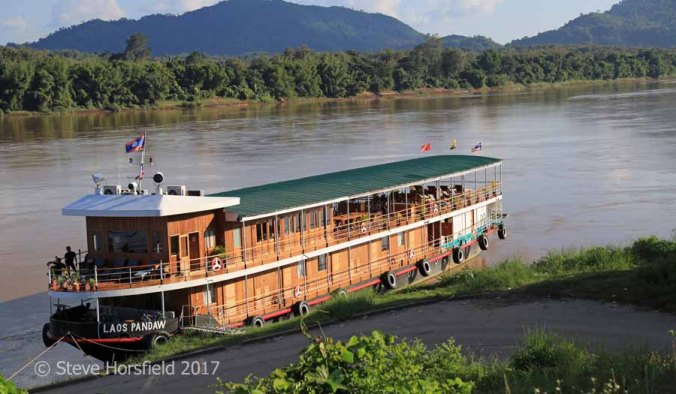 We were travelling on the RV Laos Pandaw one of specially-designed luxury small ships for exploring remote and often hard-to-navigate rivers. Each ship, hand-crafted in brass and teak, is an object of beauty in itself. The ships are small scale, and the atmosphere is informal, and very friendly. On our trip there were a total of 15 guests although there could have been up to 20. See here for more information on Pandaw.
We were travelling on the RV Laos Pandaw one of specially-designed luxury small ships for exploring remote and often hard-to-navigate rivers. Each ship, hand-crafted in brass and teak, is an object of beauty in itself. The ships are small scale, and the atmosphere is informal, and very friendly. On our trip there were a total of 15 guests although there could have been up to 20. See here for more information on Pandaw.
Vientiane, Laos’ national capital, mixes French-colonial architecture with Buddhist temples such as the golden, 16th-century Pha That Luang, which is a national symbol. Along broad boulevards and tree-lined streets are many notable shrines including Wat Si Saket, which features thousands of Buddha images, and Wat Si Muang, built atop a Hindu shrine.
The distance we traveled up the river was 900 kilometers. For much of the journey there is a panorama of mountains with the jungle coming down to the river.
Parts of the river is wide and relatively slow whereas other parts have
rapids which need to be negotiated with some care.
The boat stops a couple of times each day for us to go ashore.  Typically this would be to a small Laotian village or to an ethnic village. There are 49 officially recognized ethnic minorities in Laos representing four
Typically this would be to a small Laotian village or to an ethnic village. There are 49 officially recognized ethnic minorities in Laos representing four
ethno-linguistic families: Tai-Kadai, Mon-Khmer, Hmong-Mien and TibetoBurman.
These in turn all have many branches and sub-groups. Many of these ethnic groups are very poor living barely at a subsistence level.
The Laotian village called Ban Muangnuea
were each house has an area growing greens etc. This village was the most prosperous one we visited.
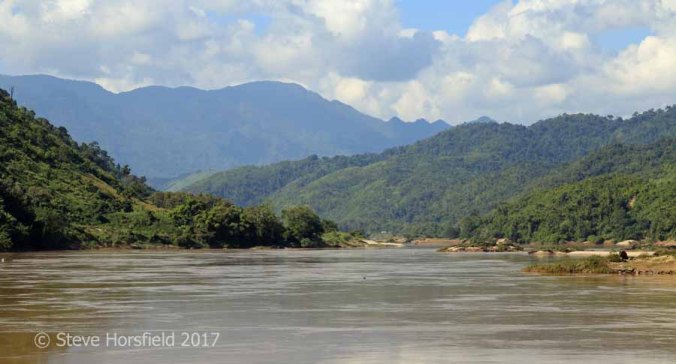
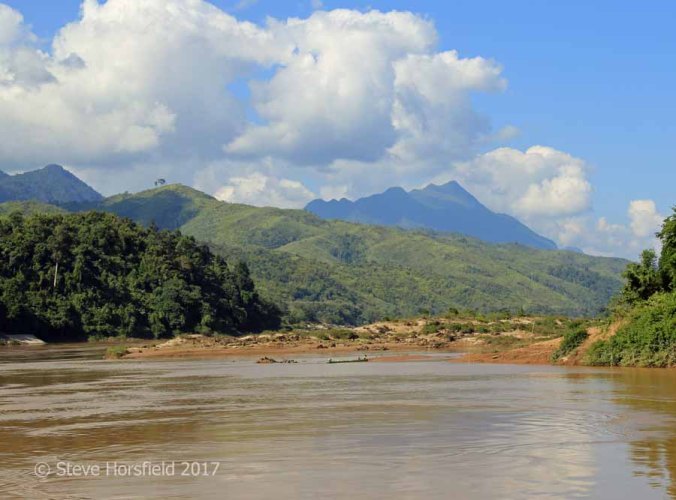
The next stop Ban Pak Lo a Khamo tribal village
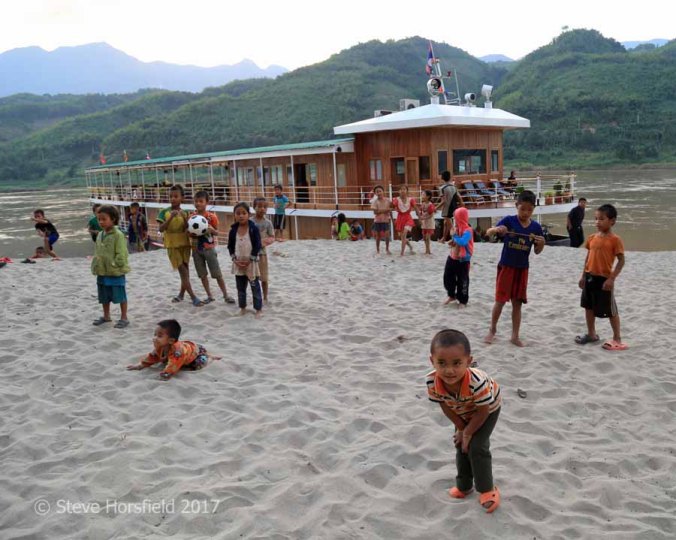 The children always come out to meet the boat whenever it stopped.
The children always come out to meet the boat whenever it stopped.
A very poor village. Their electricity is provided by the dynamo hung into the waterfall. Enough for a small light and to recharge a mobile phone.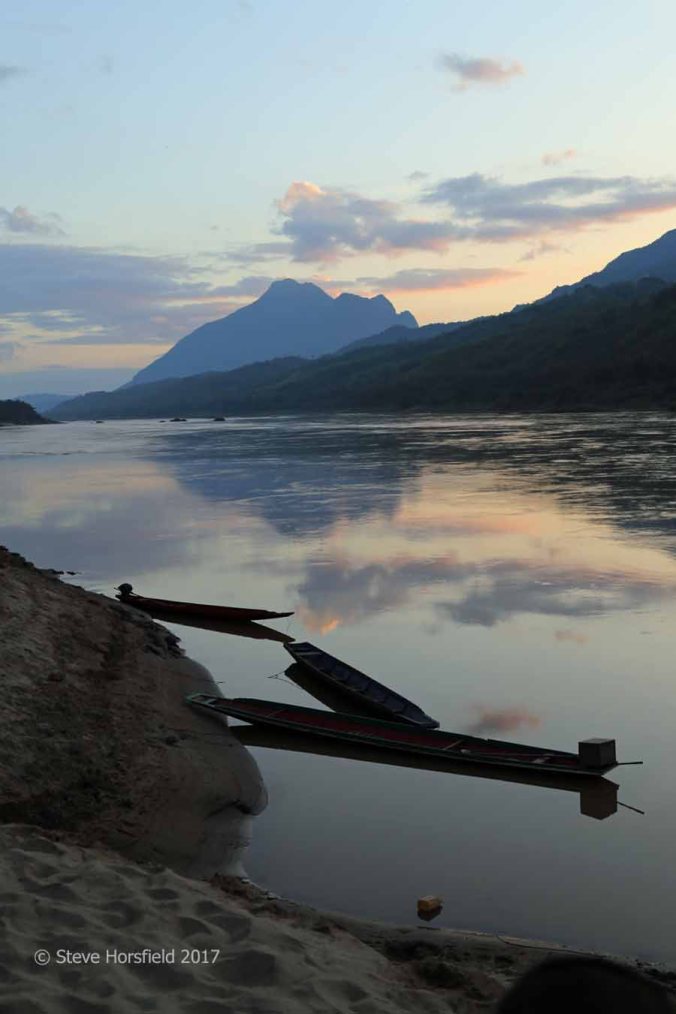
The Mekong River is changing rapidly with Chinese and Thai investments happening every where.
We passed through the Xayabori Hydroelectric Dam which is being constructed by the Thai government with 95% of the electricity going to Thailand.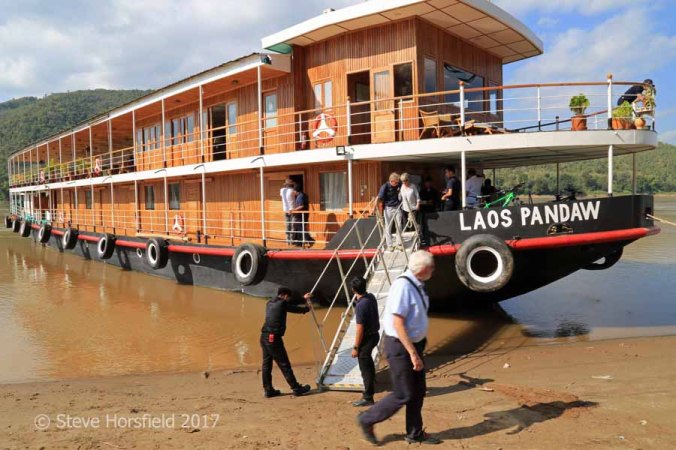 Ashore again to visit the Khaung Si waterfalls and a butterfly garden.
Ashore again to visit the Khaung Si waterfalls and a butterfly garden.
We then arrived at Luang Prabang, the ancient capital of Luang Prabang Province in northern Laos, lies in a valley at the confluence of the Mekong and Nam Khan rivers. Inhabited for thousands of years, it was the royal capital of the country until 1975. It’s known for its many Buddhist temples, including the gilded Wat Xieng Thong, dating to the 16th century, and Wat Mai, once the residence of the head of Laotian Buddhism. This is a beautiful town which was designated a UNESCO World Heritage Site in 1995 and the centre of the town is endowed with a legacy old ancient red-roofed temples and french-Indochinese architecture.
Each morning at dawn there is a alms giving ceremony called Tak Bat when processions of saffron robed monks carry baskets into which locals (and some tourists) place sticky rice. There are strict guidelines on how to behave if you join this ceremony and the Pandaw team ensured we did it correctly.
The night market was disappointing as most of the stuff on sale had clearly been mass produced, probably in China. However, as often is the case in south east asia the food market was great.
Baci Ceremony is specific ceremony in Laos which has been practiced for hundreds of years. The purpose of this Laotian ceremony is to to call escaped spirits back to the body, an animist tradition that is very important for Lao people before major events such as weddings, births, travel or when welcoming friends, to bring good luck. The ceremony involves the tying of white cotton strings around person’s wrists and the prayer saying or well wishing for the person that the ceremony is intended for. This ceremony was followed by Lao traditional dance.
The facilities on the RV Laos Pandaw are first class. From morning coffee to the cocktail hour and dinner the service was impossible to fault.
Local people collecting sand from the river for construction.

The Pak Ou Caves, a Buddhist sanctuary and an elephant camp
Many of the villages we visited are very poor and we wanted to do our bit to help. Our excellent guide, called Bee, suggested that in a particular village they needed shoes for the children and blankets to keep warm at night. We made a collection and Bee and the Pandaw team sourced the shoes and blankets. The village was called Ban Pak Sith
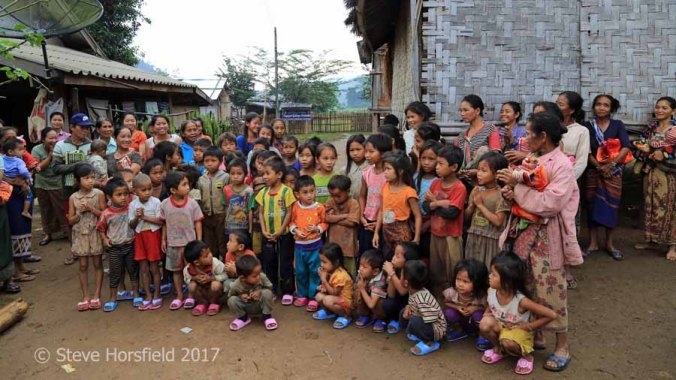
The next stop was in Pak Beng, one of those places that only exists because it is half way between the Golden Triangle and Luang Prabang. As such when we where there in the middle of the day it was more or less deserted. The village is full of hostels etc for boats to overnight when the place gets full of people. We needed to stop in order to do some formalities for our boat. However, the most interesting thing were the vegetable gardens (see photographs below) which provided produce for the many hostels and restaurants.
Another stop, this time a Lao Lum village.
Finally we arrived at Huay Xai and the “Golden Triangle”
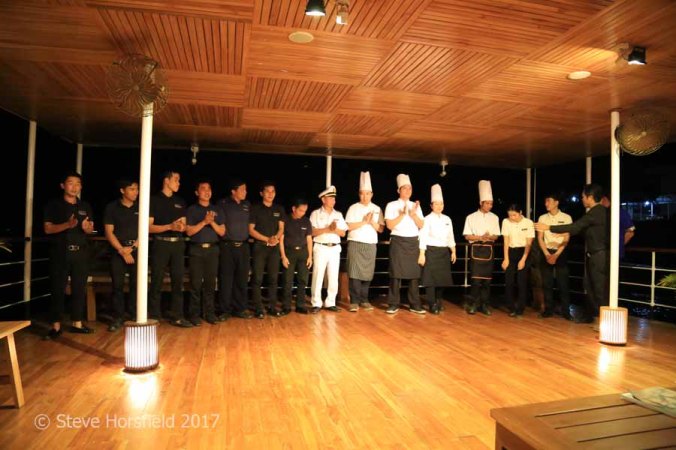 And said our good byes to the crew of the boat with many great memories of the Mekong River.
And said our good byes to the crew of the boat with many great memories of the Mekong River.




















































































































What a different culture. I noticed in the pictures of the butterfly garden there appeared to be a butterfly nectaring on a zinnia. I expected to see a more exotic bloom. Most interesting and beautiful photos. Thank you for sharing.
LikeLiked by 1 person
Hi Lisa, most of the butterflies were taken in the butterfly garden. I guess they had planted plants that attracted butterflies. Also parts of Laos are quite a long way north and quite cool in the winter.
LikeLike
Thanks for the wonderful tour. I will be looking through your photos again.
LikeLiked by 1 person
Thanks, I found the time to put it together as the snow stopped gardening!
LikeLiked by 1 person
AWESOME POST AND GREAT PHOTOS! WOW! What an adventure!
LikeLiked by 1 person
thanks. Actually this was the first part of a five week trip in Laos. Need to find some time to write up the rest.
LikeLike